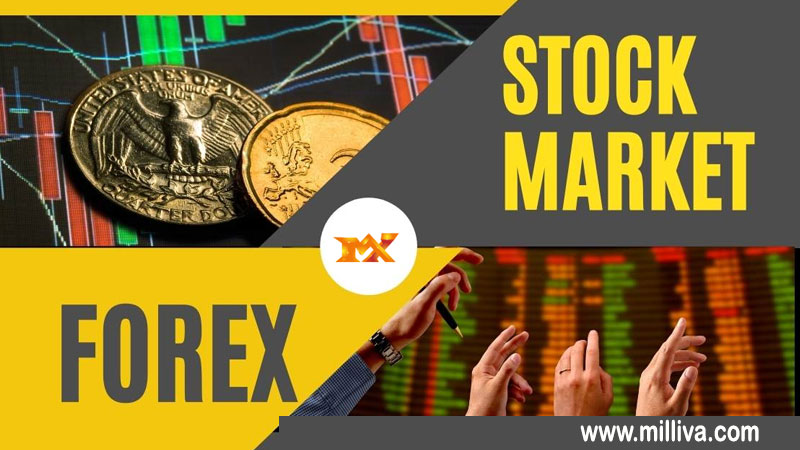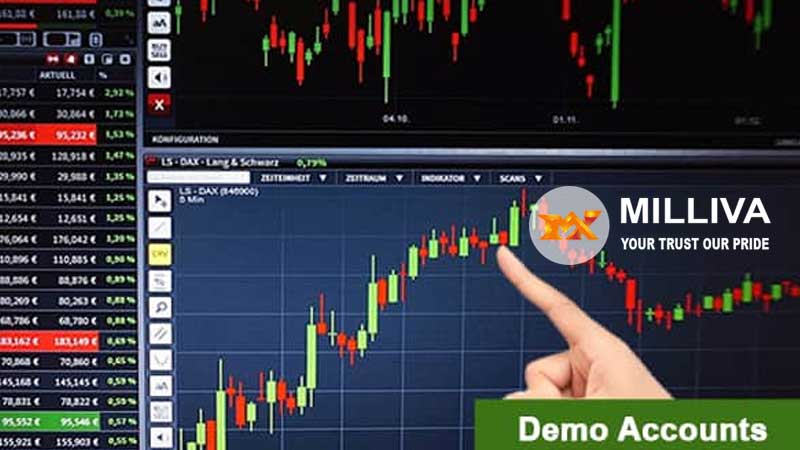Do Stock and Forex Have a Relationship

![]()
Let’s describe each financial market. Before addressing whether a forex stock comparison exists. That can lead to a valid market correlation you can utilize when trading or investing:
Stock Market
A stock market is a marketplace for buying and selling equity securities. Equities indicate company ownership and are available for purchase on the stock market. Which serves as a marketplace for individuals and businesses to buy and sell stocks. Stock markets typically centralized, which means that stocks traded on a domestic exchange. Such as the New York Stock Exchange or the Nasdaq Stock Market.
Forex Market
The foreign exchange market, sometimes known as the forex market, decentralized marketplace where currencies from other countries bought and exchanged. Unlike the stock market, where you buy and sell an asset for a specific sum of money. Forex deals involve an equal asset exchange. To put it another way, when you buy one currency, you sell another at the current exchange rate. Resulting in a short position in one currency and a long position in the other.
The market correlation might be either positive or negative. When the correlation is positive, both markets appreciate or depreciate at the same time. A negative correlation, on the other hand, suggests that one market moves in the opposite direction of the other.
A direct correlation exists between the strength of a country’s stock markets and the health of its economy. Which can lead to a visible forex stock correlation. However, because the economic state and fundamentals of the other country will factored into the exchange rate of that particular currency pair. The value of a country’s currency against other currencies may vary.

Some Correlation Does not Imply That There is a Positive Relationship
Stock and Forex Relationship
The broad U.S. stock market has historically shown a positive connection with dollar-based currency pairs. Meaning the stock market rises when the dollar rises and falls when the dollar falls. This pattern indicates the economy’s strength in the United States.
Because most large publicly traded U.S. firms are transnational. Narrow blue-chip indices like the Dow Jones Industrial Average (DJIA) may be an exception. Because such businesses do so much business outside of the United States. The value of the dollar can have a significant impact on their bottom line.
If the US currency gains significant strength, profits. Such companies’ international activities tend to drop, which has a negative impact on their stock price. As a result, while there may be a link, equities of this type may have a negative or weakly positive correlation with the dollar, making it difficult to develop a meaningful trading signal.
Some market indices, on the other hand, may have a stronger correlation with specific currency pairs. The broad S&P 500 stock index and the USD/JPY (US dollar/Japanese yen) currency pair are two examples.
While positive correlation appears to be rather significant in some sections of. The graph, divergence or negative correlation may also detected in some time periods, diminishing total correlation, says the author. For a USD/JPY or SPX trader, a clear forecasting signal for either asset may be tough to spot.
How Do Exchange Rates Affect Different Industries?
In general, as an economy’s currency falls, local industries that export products become more competitive in overseas markets, potentially boosting the bottom line of businesses in those industries. Many international firms, in fact, benefit from strong currencies in the nations where they conduct business or export. In contrast, if an exporter’s home currency appreciates, it will be less competitive in foreign markets.
Many multinational firms use forwards or option contracts to hedge their currency exposures because of the impact that currency rates can have on their operations. This protects their bottom line from unanticipated exchange rate fluctuations.
Some currencies are influenced by commodity prices because their issuing country’s industries are significant importers or exporters of such commodities. For this reason, the currencies of some resource-based economies, such as Canada, New Zealand, and Australia, are usually referred to as commodity currencies.
Movements in the relevant commodities produced in or utilized by those economies can have a substantial impact on the value of commodity currencies. Canada, for example, exports oil and gold, whilst Australia does the same and New Zealand exports food and wood. When the price of a commodity that a country exports rises dramatically, the currency of that country tends to appreciate as well.
How to Make the Most of Forex-Stock Correlations
When choosing a stock to trade or invest in, market conditions and the nature of a company’s operation have a significant effect. Furthermore, a thorough fundamental analysis of a stock and its underlying firm can disclose whether the company is exposed to significant foreign exchange risk and what strategies it employs to mitigate that risk.
Consider the case of Procter & Gamble Co. as an example of how FX rates can effect a major corporation’s stock price (NYSE: PG). Because P&G manufactures a large portion of its products in the United States, a strong euro and a weak dollar environment would normally favor P&G — and thus its stock price. Because sales of such products in the European Union (EU) for euros provide a higher U.S. dollar return when those euros are sold or converted back into P&G’s local currency, there is a positive link.
P&G’s main competitors are Nestlé S.A. (OTC: NSRGY) of Switzerland and Unilever plc (NYSE: UL) of the United Kingdom, both of which manufacture many of their products in the EU and the UK. This increases the cost of manufacturing their products and gives P&G a competitive advantage when selling their products created in the United States in the European Union.
A strong US dollar, on the other hand, would assist P&G’s competitors while hurting the company’s bottom line. This is due to the fact that P&G’s products would be more expensive to manufacture in the United States, making them less competitive abroad, and the euros received for its products would be worth less dollars in a weak euro environment.
About the best forex broker in the world:
Milliva the Most Trusted Forex Broker In India is a significant provider of online currency (FX) trading, contract for difference (CFD) trading, and associated services. We offer account types and services that are customized to meet the needs of all levels of retail traders.
visit us on: www.milliva.com







Forex or Stock Market? Which is better
04th Jul 2022[…] now have access to an expanding choice of trading products. It hard to choose which one of these marketplaces to invest. And numerous factors should be considered in order to make good […]
Harami Candlestick Pattern - Bullish & Bearish Patterns in Forex Training
14th Jul 2022[…] candlestick chart depicts the price data of a stock over the course of a single day. Including the opening, closing, high, and low prices. Investors […]